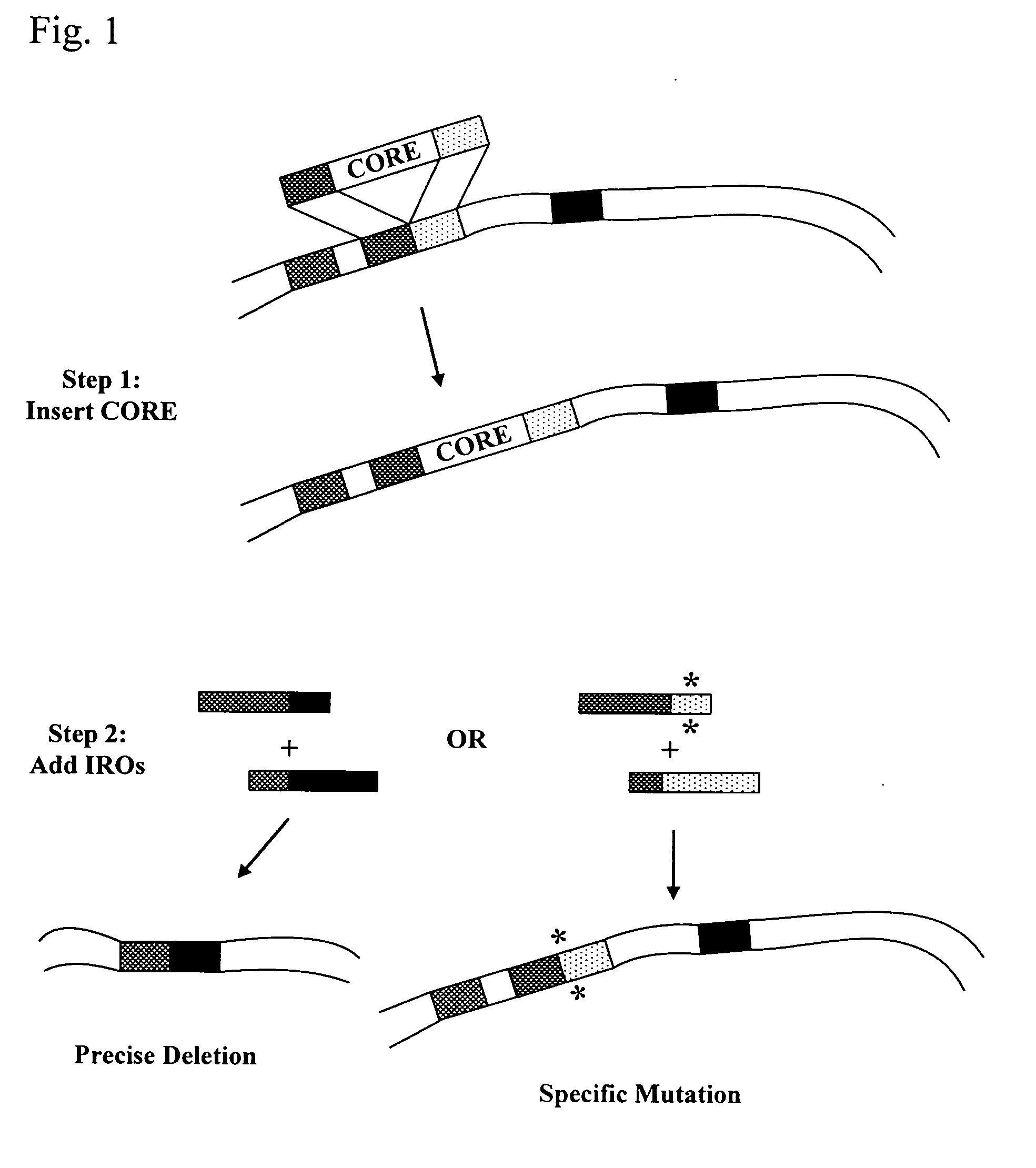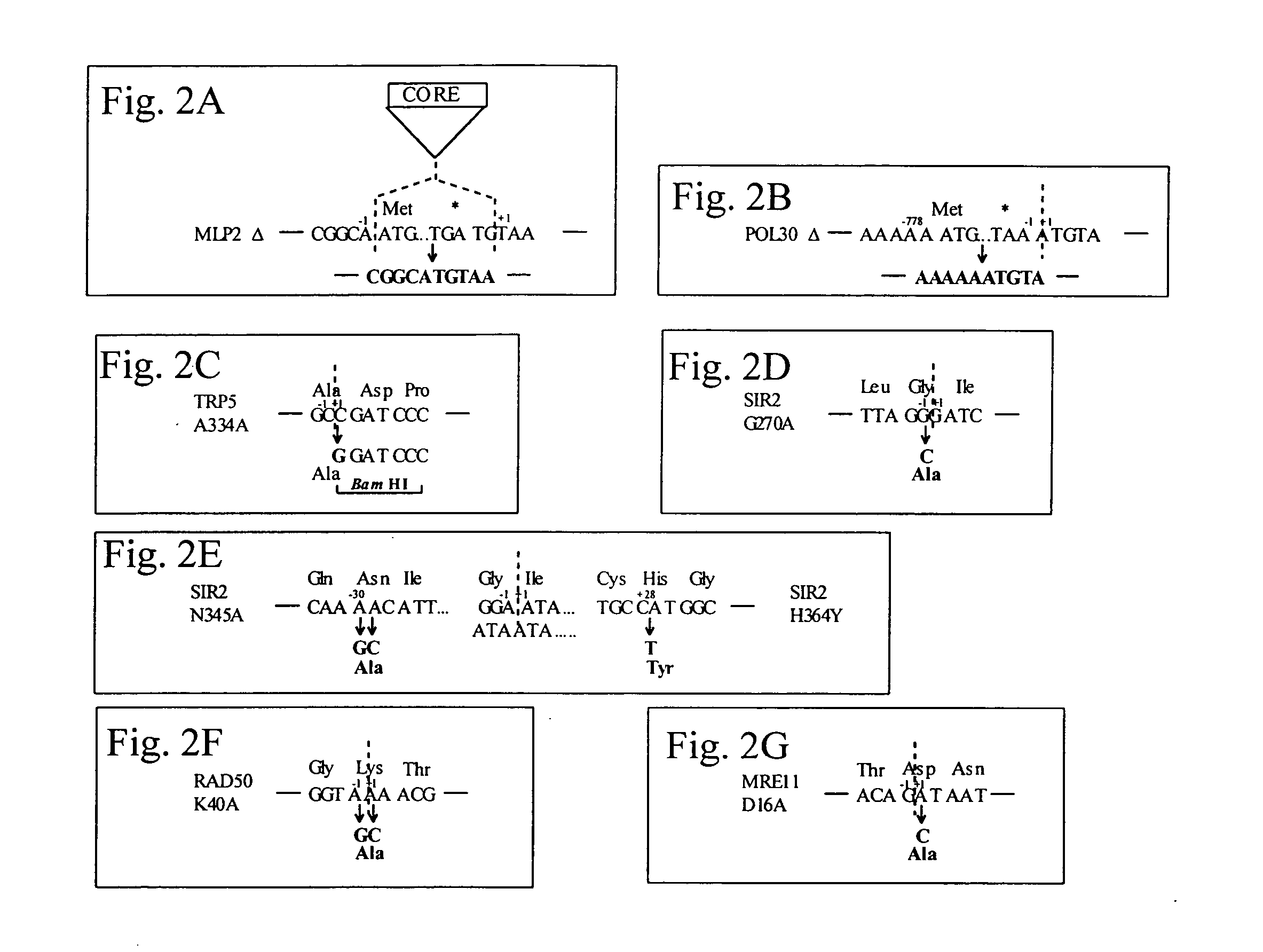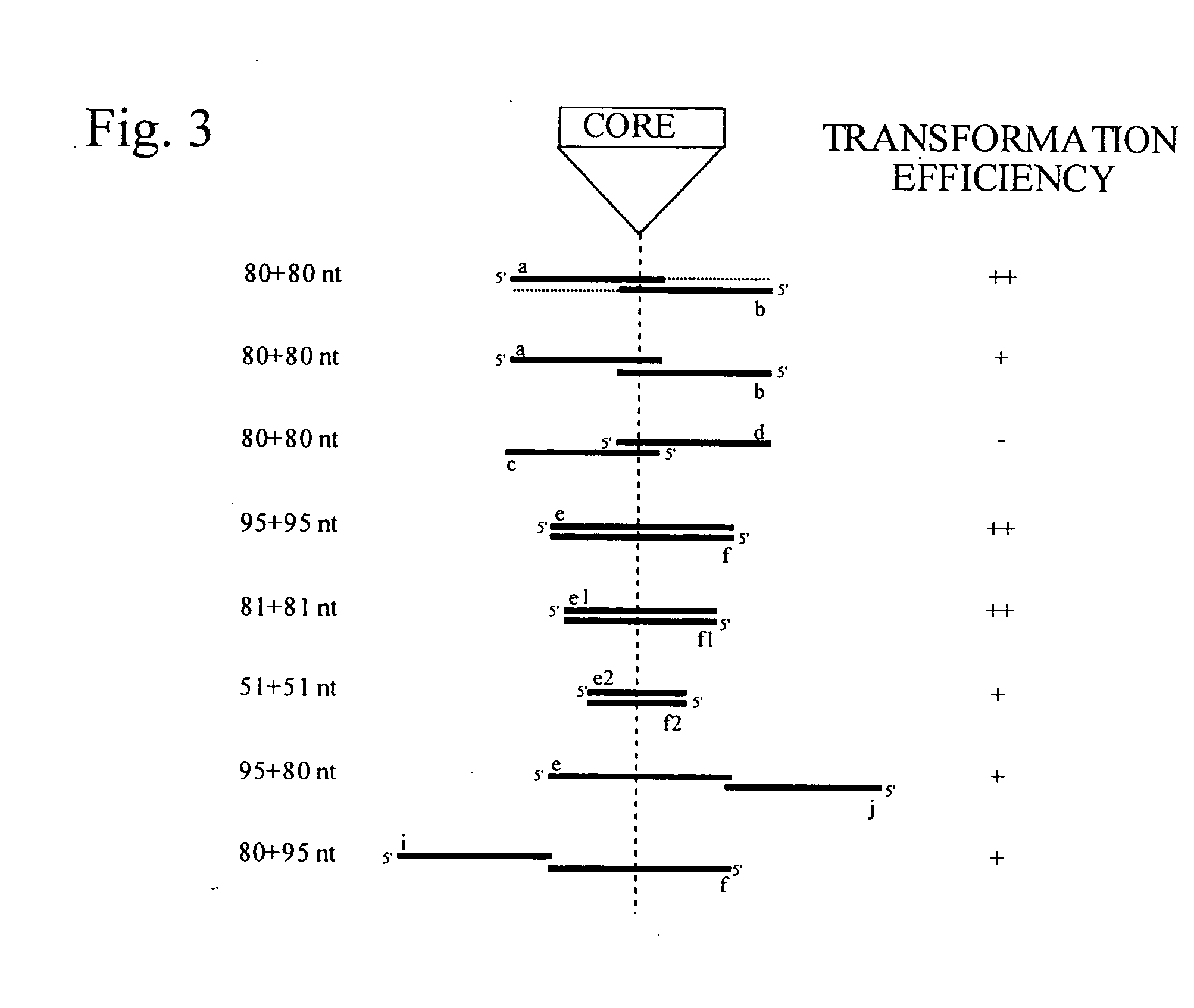Systems for in vivo site-directed mutagenesis using oligonucleotides
a technology of site-directed mutagenesis and oligonucleotide, which is applied in the field of in vivo site-directed mutagenesis, can solve the problems of increasing the risk of additional mutations, limited flexibility of present systems, and laboriousness, and achieves limited access to restricted sites
- Summary
- Abstract
- Description
- Claims
- Application Information
AI Technical Summary
Benefits of technology
Problems solved by technology
Method used
Image
Examples
example 1
Site-directed Delitto Perfetto Mutagenesis
[0295] The delitto perfetto approach permits genomic modification without the retention of heterologous sequence (FIG. 1). Since integration of the CORE-cassette utilizes simple, straightforward integrative transformation procedures (Wach et al., Yeast 10, 1793-1808, 1994) and the mutation replacement involves transformation by easily designed oligonucleotides, this system provides for the rapid creation of a variety of genetic changes, as discussed below. Unlike other systems, this in vivo site-specific mutagenesis strategy is versatile with regard to chromosomal change, since many types of modification can be generated in the nearby region once a CORE-cassette is inserted.
[0296] This example provides a description of several sequence modifications that have been made using the delitto perfetto in vivo mutagenesis system.
Experimental Protocols
[0297] Unless otherwise stated, genetic manipulations were carried out according to standard method...
example 2
Targeting by IROs in Delitto Perfetto Involves Homologous Recombination
[0354] Since the RAD52 gene is important for nearly all types of homologous recombination, its role in delitto perfetto mutagenesis was examined. Wild-type and mutant (RAD52::LEU2; two independent isolates) strains were transformed with a control centromeric plasmid pLKL67Y (containing the HIS3 and URA3 genes), or the following TRP5 IROs: (I) a+b Pfx, (2) a+b, (3) c+d, (4) e+f, (5) e and (6) f.
[0355] In repeated transformations with pLKL67Y, the wild-type transformation level was about 4-fold higher than for the rad52 mutant (4.3.times.10.sup.5 / .mu.g vs. .about.1.times.10.sup.5 / .mu.g, respectively), apparently due to reduced plating efficiency in the rad52 mutant. No 5-FOA.sup.R G418.sup.s clones were observed in the rad52 strain with various IROs in three separate experiments even when 10 times more e+f was used (FIG. 4A and 4B). Complete RAD52 dependence was also observed for modifications at SIR2 codon 270 (se...
example 3
A Diagnostic Tool for Assessing Tumor Associated p53 Mutations
[0360] An expression cassette containing the human p53 coding sequence under the GAL1 promoter is integrated into a suitable chromosomal locus (e.g., LYS2 gene on chromosome III ) of a haploid yeast strain. As described in FIG. 1, the CORE-cassettes were targeted by transformation into seven different positions in the p53 coding sequence at 95 nucleotide intervals across the DNA binding region, from nucleotide 315 to nucleotide 885. Thus, a panel of seven isogenic yeast strains containing one CORE-cassette at each of the indicated positions were created. Oligonucleotides containing desired p53 mutations were designed to replace by transformation the closest CORE-cassette in the appropriate strain resulting in the appropriate site-directed mutation. Changes are confirmed by in vitro amplification (e.g., PCR) and sequence analysis of the p53 coding sequence region containing the introduced mutation.
[0361] The consequences o...
PUM
| Property | Measurement | Unit |
|---|---|---|
| Fraction | aaaaa | aaaaa |
| Time | aaaaa | aaaaa |
| Angle | aaaaa | aaaaa |
Abstract
Description
Claims
Application Information
 Login to View More
Login to View More - R&D
- Intellectual Property
- Life Sciences
- Materials
- Tech Scout
- Unparalleled Data Quality
- Higher Quality Content
- 60% Fewer Hallucinations
Browse by: Latest US Patents, China's latest patents, Technical Efficacy Thesaurus, Application Domain, Technology Topic, Popular Technical Reports.
© 2025 PatSnap. All rights reserved.Legal|Privacy policy|Modern Slavery Act Transparency Statement|Sitemap|About US| Contact US: help@patsnap.com



